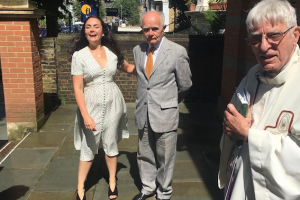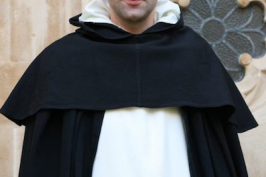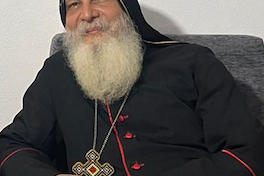Relics of St Paul discovered

As the Year of Saint Paul draws to a close, two major archaeological discoveries have been made related to the saint.
Pope Benedict announced yesterday, that fragments of bone from the first or second century have been found in a tomb in the Basilica of St Paul in Rome.
Speaking at St Paul's-Outside-the-Walls, on the eve of today's Feasts of St Peter and St Paul, the Holy Father said: "This seems to confirm the unanimous and undisputed tradition that these are the mortal remains of the Apostle Paul."
Tradition has always held that St Paul was buried with St Peter in a catacomb on the Via Appia, before being moved to a basilica erected in his honour. For centuries it was believed that his remains were buried beneath the altar.
A stone coffin, containing human remains, was discovered during excavations at St Paul Outside the Walls Basilica. In February 2001. Giorgio Filippi, an archaeologist with the Vatican Museum, said at the time: "The tomb that we discovered is the one that the popes and the Emperor Theodosius (379- 395) saved and presented to the whole world as being the tomb of the apostle."
Pope Benedict explained yesterday that archaologists have now carried out an investigation of the tomb. Giving details of the discovery, Pope Benedict said saying a tiny hole had been drilled in the sarcophaguus, revealing "traces of a precious linen cloth, purple in colour, laminated with pure gold, and a blue coloured textile with filaments of linen".
"It also revealed the presence of grains of red incense and traces of protein and limestone. There were also tiny fragments of bone, which, when subjected to Carbon 14 tests by experts, turned out to belong to someone who lived in the first or second century," said the Pope.
The discovery in the tomb, coincided with news that Vatican archaeologists have discovered what they believe is the oldest image in existence of St Paul, dating from the late 4th century, on the walls of a catacomb.
Vatican newspaper Osservatore Romano , yesterday published a photograph of the icon showing the thin face of a bearded man with large eyes, sunken nose and face on a red background surrounded with a yellow circle - the classic image of St Paul.
Experts of the Ponitifical Commission for Sacred Archaeology made the discovery on 19 June in the Catacomb of Santa Tecla and described it as the "oldest icon in history dedicated to the cult of the Apostle".
Barbara Mazzei, the director of the work at the Catacomb, said: "We had been working in the Catacomb for some time and it is full of frescoes. However the pictures are all covered with limestone which was covering up much of the artwork and so to remove it and clean it up we had to use fine lasers. The result was exceptional because from underneath all the dirt and grime we saw for the first time in 1600 years the face of Saint Paul in a very good condition.
"It was easy to see that it was Saint Paul because the style matched the iconography that we know existed at around the 4th Century - that is the thin face and the dark beard. It is a sensational discovery and is of tremendous significance."
Archbishop Gianfranco Ravasi, the Vatican's culture minister, said: "This is a fascinating discovery and is testimony to the early Christian Church of nearly 2000 years ago. It has a great theological and spiritual significance as well as being of historic and artistic importance."
The Catacomb of St Thekla is closed to the public but experts said they hoped to be able to put the newly discovered icon of St Paul on display some time later this year.
Source: OR/ICN




















